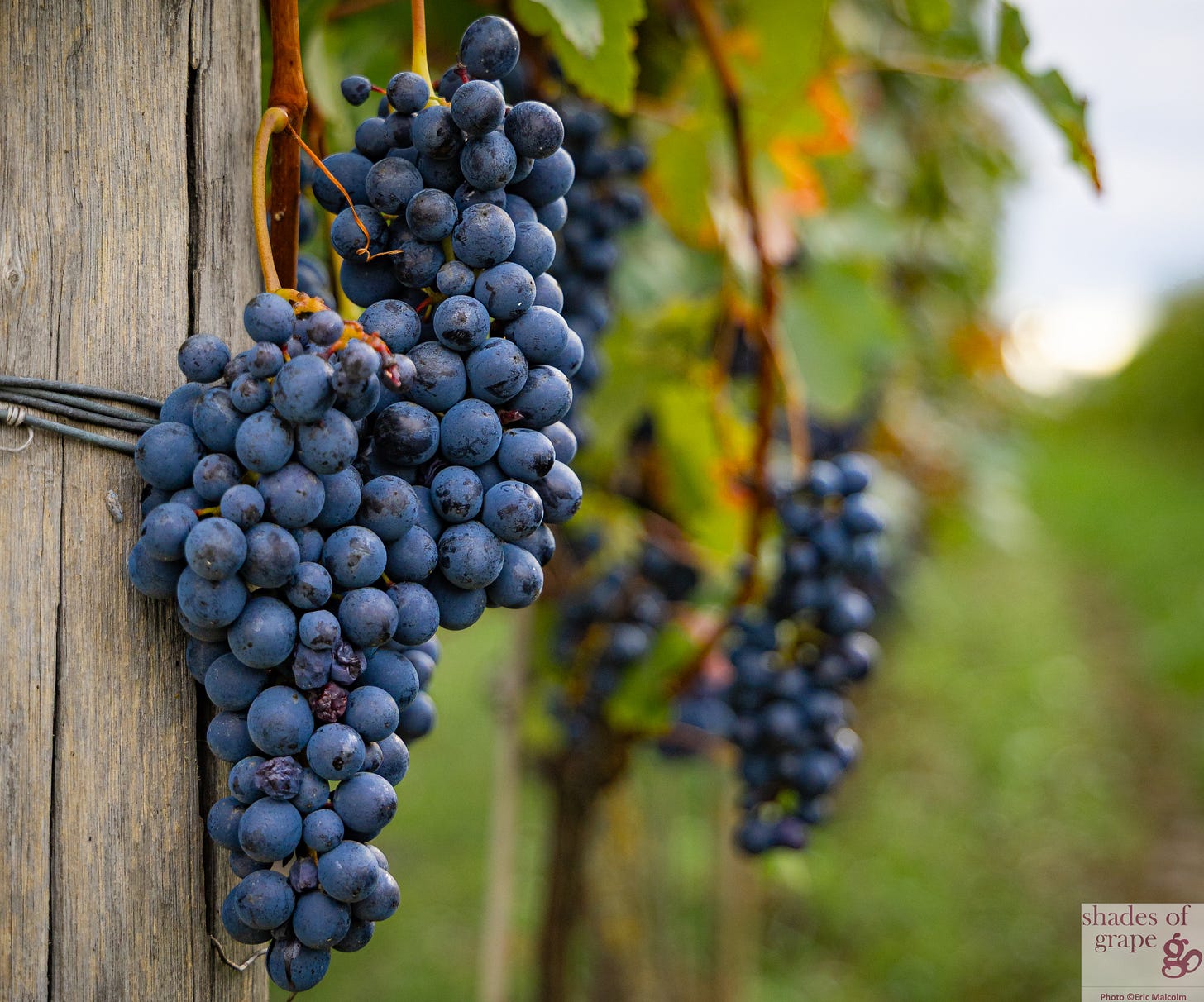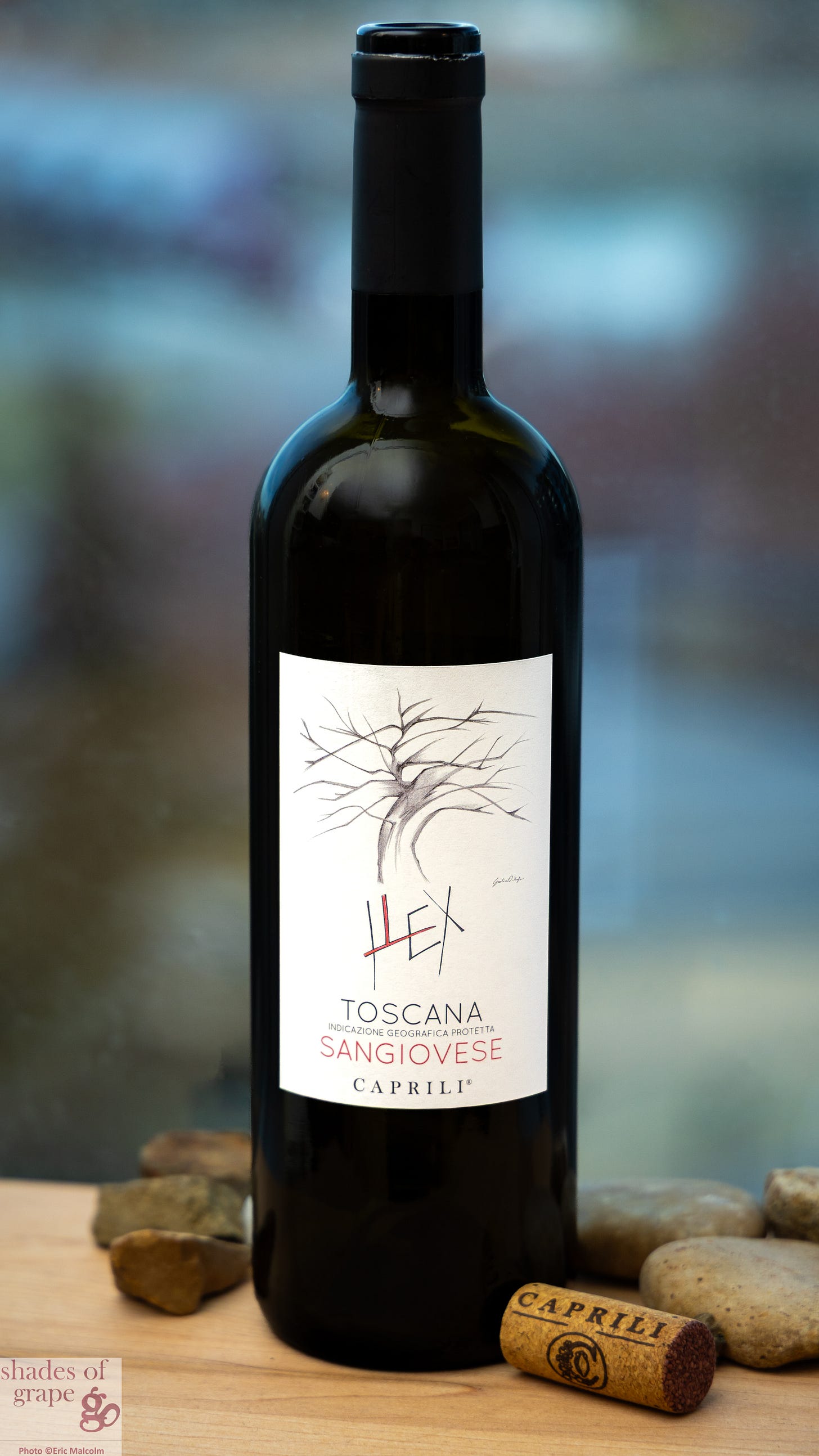Say My Name - Grapes Don't All Have French Names
- synonyms, indigenous vs international grapes, & more
Wanna DRINK BETTER? Reach out for one-on-one curation time with me with no commitment or minimum purchase required.
EXTENDED! I will delay converting Shades of Grape to behind a paywall as the paid subscriber conversion has been problematic for people. Still having difficulties? Please reach out!
I will increasing my rate soon - so if you are debating becoming a paid subscriber do it now and SAVE!
Subscribing is a way to show your appreciation for:
my wine recommendations,
any assistance I provide along your wine journey, or
my writing entertainment!
A few weeks back I attended a girls’ weekend. For Canadian Thanksgiving a week earlier, I had assembled wines for one of the gal’s family dinner. At one point this friend said in a frustrated tone:
“Eveline, you need to write an article with all the French names for all grapes.”
“Many grapes don’t have French names.” I replied.
“Well how do I know what I am drinking then,” she replied with the same tone.
“Let’s back up,” I said. “Is this regarding last weekend’s white wines?”
“Yes, I didn’t know what I was drinking.”
I mentioned I put a Gavi and a Soave in the case for the dinner.
“Yeah, what is that in France.”
I explained how Italian wines can be confusing, as Gavi and Soave are not grapes but subregions, whose wines are made with Cortese and Garganega grapes respectively. These are indigenous to Italy and not grown in France, therefore don’t have a French equivalent.
“Ugh! See! How am I supposed to know that.”
I explained that ultimately, she doesn’t need to know the grapes, just that she likes Gavi and Soave and by default she will get those grapes when the bottles are labelled as such.
Somehow, I got into synonyms for Grenache specifically, its French name, and how it is called Garnacha in Spain, and Garnatxa in Catalonia’s portion of Spain.
“Yeah, this is what I am talking about. I assumed all grapes had synonyms and I find this all confusing. You need to write about THAT!” she stated.
And so here we are.
Exactly.
So I want to start by explaining that there are thousands of grape varieties out there. Even wine professionals cannot keep track of all of them. According to Jancis Robinson’s website, there are 5000 - 10,000 Vitis Vinifera varieties (grape species from which most of the world’s wines are made). Jancis’ book Wine Grapes, published in 2012, includes 1368 varieties that are “more common”.
No wonder there is confusion.
Yup – this is why people study wine. The bonus is it is never dull and there is always something to learn about and discover.
So let’s get into this topic! I will try to give my friend a list of grapes with synonyms.
Okay, let’s relieve some angst there!
Exactly, but first, I will refresh your memory on what international and indigenous grape varieties are.
Thanks, I was too embarrassed to ask.
In the wine world, the terms “international” and “indigenous” are used to describe grape vine varieties. The former are those that are well known internationally and commonly planted in many of the world’s wine regions. But it is a loose term, and the list will vary depending on the source. Below are some of the most important international varieties along with their relevant synonyms.
Relevant synonyms? Why not all synonyms?
Cuz this would get boring real fast. This is intended to be practical. Some synonyms are not relevant to the majority of the population.
White Grapes – international varieties
Sauvignon Blanc
Chenin Blanc/Steen
Sémillon
Pinot Gris/Pinot Grigio/Grauburgunder
Muscat/Moscato/Zibibbo/Muskat/Muskateller/Moscatel (Muscat is technically a family of grapes so there are many different names some are even black.)
Gewürztraminer
Viognier
Pinot Blanc/Weissburgunder/Pinot Bianco
Black Grapes - international varieties
Merlot
Pinot Noir/Spätburgunder/Pinot Nero
Syrah/Shiraz/Mataro
Garnacha /Grenache/Garnatxa/Cannonau
Gamay
Cabernet Franc/Breton
Malbec/Côt
Okay so indigenous vine varieties must be less widely grown then.
Exactly. The Oxford Companion to Wine describes them as: ‘Vine varieties that are local to a particular area and have a relatively long tradition of being grown there.’
Depending on the source, some of the following could be considered international or indigenous as some are now grown beyond their country/region of origin, although not as commonly as the examples above.
White Grapes – indigenous varieties
Vermentino/Rolle
Melon de Bourgogne/Melon/Muscadet
Aligoté
Marsanne
Roussanne
Trebbiano/Ugni Blanc
Cortese
Garganega
Malvasia/Malvoisie
Viura/Macabeo/Maccabeu
Grenache Blanc/Garnacha Blanca
Grüner Veltliner
Alvarinho/Albariño
Black Grapes – indigenous varieties
Mourvèdre/Monastrell/Mataro
Tempranillo/Tinta de Toro/Tinto Fino/Ull de Llebre/Cencibel/Tinta del País/Tinta Roriz/Aragonez
Sangiovese/Brunello/Morellino/Prugnolo Gentile
Aglianico
Carignan/Cariñena/Mazuelo/Carignane
Carmenère
Primitivo/Zinfandel/Tribidrag/Crljenak Kaštelanski
Petit Verdot
Pinot Meunier/Meunier
Barbera
Dolcetto
Corvina
Montepulciano
Lambrusco (family of grapes – see Muscat above)
Nero d’Avola
Nerello Mascalese
Cinsault/Cinsaut
So, I stopped at 50 grapes. I will likely offend someone because I didn’t mention this or that grape. I focused on the varieties that seem more common on the global marketplace.
So are you featuring a wine this week? And how did you choose?
I chose an Italian wine as Italy is known for having significantly more indigenous grape varieties than any other country: 375 to 500 identified varieties depending on the source.
This Tuscan Sangiovese dominant wine is an outstanding value. I had to prevent myself from tipsy texting my colleagues (again) as I was SO excited about this wine when I tasted it for the first time.
Oh brother, tipsy texting?
I just made that up. Snappy right? It’s an occupational hazard when I am sampling at home and not spitting!
The wine is a Super Tuscan as it also contains a small percentage of international varieties, namely Merlot and Syrah at less than 5%. The subregion the grapes are from is Montalcino, which is known for its Brunello di Montalcino. Brunello is a synonym for Sangiovese, but specifically a clone of Sangiovese also known as Sangiovese Grosso.
This IS a fitting wine for this article! Bravo!
Indeed! Check out the details including tasting notes and pairings below! Again, the value on this one is killer!
Enjoying my recommendations? Consider upgrading to a paid subscription.
Caprili ‘Ilex’ 2024 from Montalcino, Tuscany, Italy
Style: Medium Body Old World Style Red Wine
Varieties: 95% Sangiovese Grosso, 5% Merlot & Syrah
This elegant wine has violet and lavender aromas on the nose. The palate flavours include blueberry, ripe raspberry, blackberry, milk chocolate, and earth with hints of leather, wet leaves, animal, and herbal notes. It has high chalky tannins and a long finish. This wine is an amazing value.
Best pairings: Braised short ribs or lamb, Beef tenderloin with an Herbe de Provence rub, Pork tenderloin with a berry reduction, Lasagna, Pizza, Grilled portobello stuffed with ricotta and sage, Pecorino, Brie topped with a port jam and green onions.
Serving Temperature: 15-17 degrees Celsius
Serving Tips: A quick decant was great, 30 minutes is optimal!
Price: ~$21 Cdn
If you're in Alberta and want a one-on-one wine curation experience, please reach out! No commitment or minimum purchase required. Interested? Please reach out!
A huge thank you to my paid subscribers—your support helps cover the costs of creating these weekly articles.
Love my wine recommendations? Enjoy my personal wine curation service? If you find value in my writing, consider upgrading to a paid subscription to help me keep sharing the world of wine with you!
Subscribers receive 15% off Wine & Spirits whenever shopping at Cork Fine Wines, ground floor, Bow Valley Square in Calgary.
SOURCES:
Caprili (2025) Home | Caprili. https://www.caprili.it/en/#ilextoscanasangiovese.
Chartier, E. (2025) ‘When in Rome ... drink Bellone (Grape) wine!,’ shades of grape, 21 February. https://www.shadesofgrape.ca/p/when-in-rome-drink-bellone-grape.
Harding, J. and Robinson, J. (2023) The oxford companion to wine. Oxford, United Kingdom: Oxford University Press.
Jr, T. (2025) Our 2025 wine writing competition. https://www.jancisrobinson.com/articles/introducing-our-2025-wine-writing-competition.
Robinson, J. (2003) Vines Grapes & Wines: The wine drinker’s guide to grape varieties. McArthur & Co. Publishing.
Wine & Spirit Education Trust (2025) D3: Wines of the World - An accompaniment to the WSET Level 4 Diploma in Wines. Version 1.2. London: Wine & Spirit Education Trust.



Excellent explanation that one needs to have on hand in Europe!! Region vs. grape brings an aha moment x